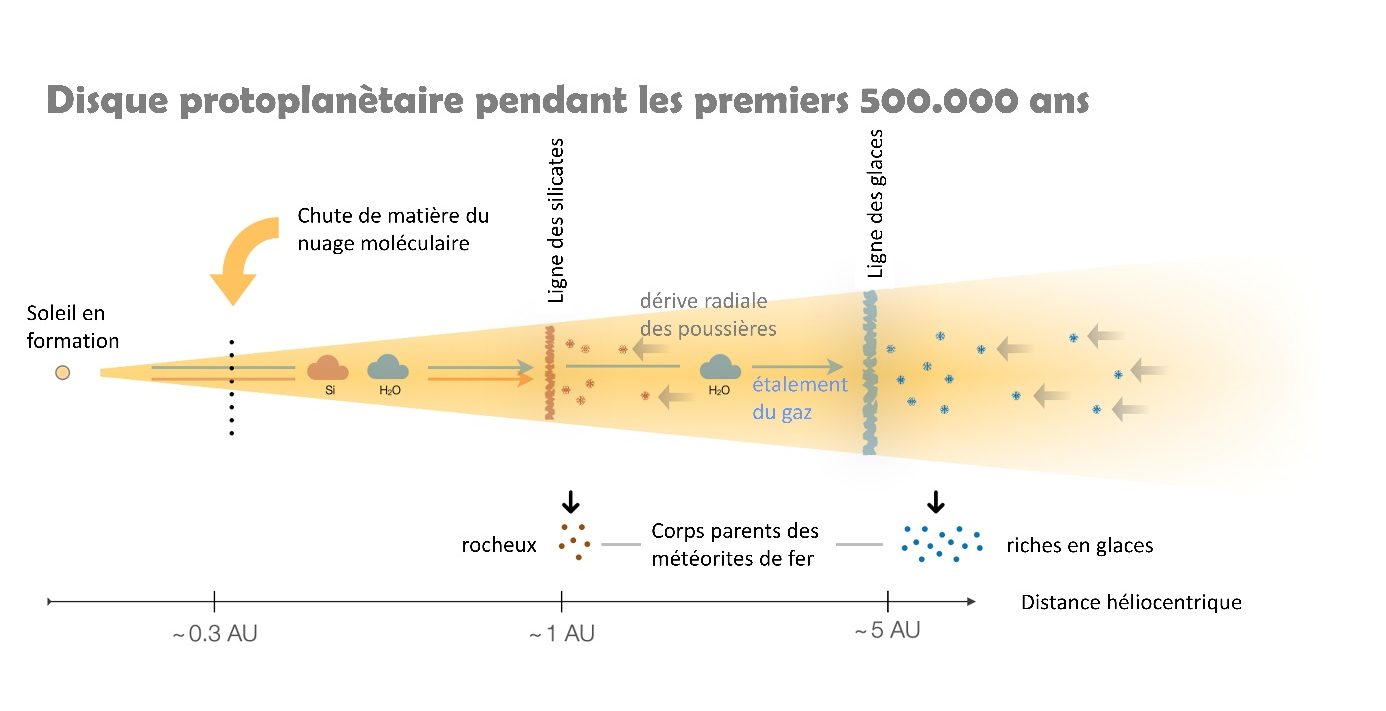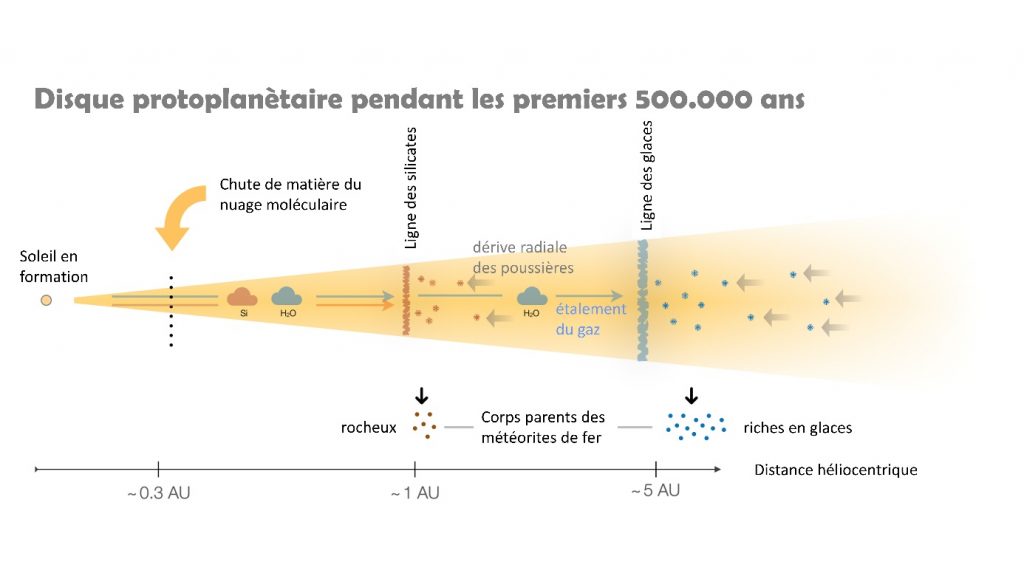Formation of the solar system’s first small bodies in two separate rings
The formation of small solar system bodies, such as asteroids and planetesimals, remains a mystery. While there's general agreement that their formation is the result of dust clusters in the protoplanetary disk collapsing under their own weight, there's still a great deal of uncertainty as to where and when they formed.

Publication date: 12/01/2022
Press, Research
Related teams :
Cosmochemistry, Astrophysics and Experimental Geophysics (CAGE)
Related themes : Origins









